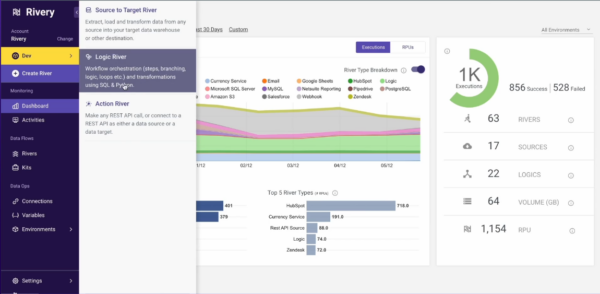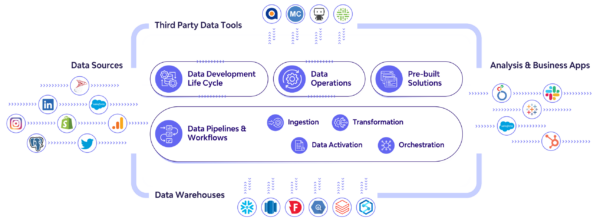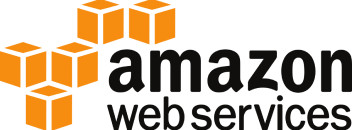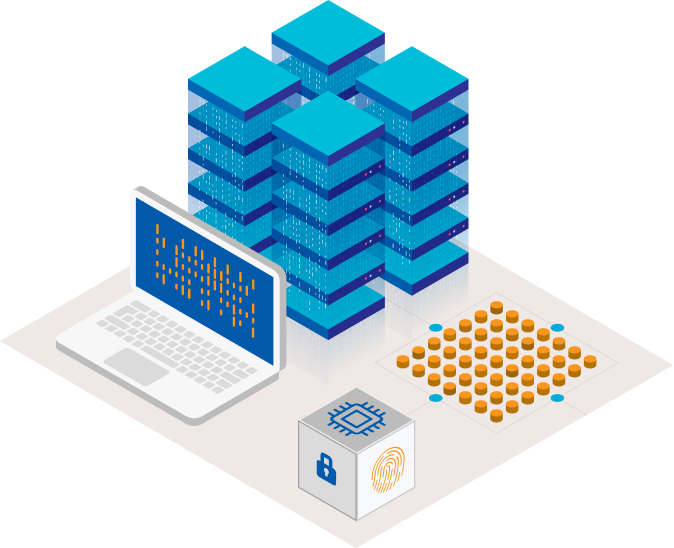Boomi is growing faster than ever, showcasing a larger and more diverse range of offerings than ever before. Examining its current capabilities, Boomi provides a platform that facilitates master data management, API management, advanced EDI management, integration, and more. Some of Boomi’s more recent features include generative AI for building integrations and AI agents for building and documenting integrations; both of which were well-received. Moreover, it was only last year that Boomi acquired two new businesses: APIIDA’s API Control Plane business and Cloud Software Group’s Mashery business, allowing Boomi to strengthen and broaden its API capabilities. Now, Boomi has acquired Rivery: a data pipeline and integration platform that specialises in helping businesses manage and consolidate their data.
What is Rivery?
Rivery is a Cloud ELT Tool and Data Pipeline and Integration Platform. ELT stands for extract, load and transform, and Rivery makes it easy to build end-to-end ELT data pipelines quickly through its simple user interface. Like Boomi, Rivery is a low-code, cloud-native platform which helps customers to move large data volumes quicky through ELT, ETL, and Change Data Capture (CDC) processes. This data can then be utilised for analytics and AI use cases.
The main building block for Rivery is called a River and there are three types: Source to Target, Actions, and Logic. A Source to Target River is intended to extract and load data from a source and import it into a data warehouse or other destination. Using the Source to Target River, Rivery can automatically identify the structure of incoming data and create the tables and columns as needed in the source destination.
An Actions River is designed to make a REST API call or connect to a REST API, either as a data target or a data source. Actions Rivers are great for connecting to data sources not provided out-of-the-box, and for pushing data to any API-based system (such as with reverse ETL).
A Logic River is best used when you need to transform data using Python or SQL and orchestrate automated data workflows. SQL transformations can be used where in-warehouse transformations are required, and Python can be used for more complex scenarios.

Image from rivery.io/product
What Features Does Rivery Offer?
Rivery has an abundance of features that make it easy to use and contribute to it being an innovation leader in modern data integration. A closer look at some of these features includes:
- Completely Automated Saas Plaftorm: Rivery is cloud-based platform, with little to no maintenance required. With Rivery you can get setup and building end-to-end ELT data pipelines in as little as a few minutes. Rivery even has an embedded AI engine in its platform, offering unrivalled simplicity.
- Rivery Kits: Rivery Kits are production-level workflow templates that are deploy complete and ready to use. This is similar in nature to importing a process from Boomi’s process library. With just one-click you can have a complete workflow that includes transformations, pipelines, schemas, and best-practice logic already defined for you.
- Data Development Lifecycle Support: Like Boomi, Rivery has separate environments for each stage of development, so you can set up environments for development, staging and production. Rivery also has built-in version control, so you can revert your changes easily. Customers can also remotely edit, execute, manage, and deploy data pipelines in Rivery using their API or command line interface (CLI).
- Large Catalogue of Native Connectors: Rivery offers 200+ native connectors that can connect instantly to data warehouses, file storage, databases, and applications. The connectors are kept up-to-date and are fully managed, including connectors for MySQL, Amazon S3, Databricks, Salesforce and more.
- Python Support: Rivery is intended to be a low or no-code platform, but you have the option to use custom code where required. Rivery supports Python as its custom code language of choice, and you can use Python to pull data from any system.
What Makes Boomi and Rivery a Great Fit?
There are many similarities between Boomi and Rivery that make integrating the two a natural and easy choice. Both Boomi and Rivery are cloud-based platforms that follow a low-code approach. This approach means that both Boomi and Rivery are self-service, user-friendly platforms that can be used by customers with varying levels of technical ability to quickly build integrations.
Likewise, both Boomi and Rivery recognise the importance of AI. Rivery has an ‘Ask AI’ intelligent assistant that is embedded within the Rivery platform. This assistant will quickly and accurately respond to questions by consulting Rivery’s knowledge base of user community insights, product documentation, and API references. Boomi also has AI agents of its own that can do this, as well as perform extra tasks such as building processes and documenting integrations.
On the feature front, Boomi and Rivery offer a lot of the same features that will make each platform familiar to use for long-time Boomi and Rivery users. Examples of this include their multitude of connector offerings, with both platforms offering an extensive selection of connectors as well as the ability to create your own. Both platforms also offer process scheduling, deployment environments and interfaces for reporting, as well as an extensive catalogue of pre-built processes available for use.

Image from: rivery.io/product
What Does Rivery Bring to The Table for Boomi?
Anyone that’s used Boomi will know that one of the shortfalls when building integration processes is that Boomi does not handle looping logic very well. Boomi also has limited support for executing process steps in parallel, as generally documents must complete one process step before moving to the next (unless you use a flow control shape). Rivery overcomes this shortfall as it supports adding multiple steps that can run in parallel, as well as handling loops and conditional logic with ease. This makes Rivery preferable to use when dealing with scenarios where looping or parallel processing is a must.
Rivery also offers a few different reporting dashboards that would complement the reporting Boomi currently offers. The main Rivery dashboard can show the number of executions by type of river (Email, MySQL etc.) over time, as well as the top five River types used and the total number of executions. There is also a Rivery Pricing Unit (RPU) dashboard that makes it clear to the customer how many RPU credits they have consumed as part of their consumption-based pricing plan.
Furthermore, Rivery offers Python as a language when implementing custom code, which is a welcome addition to the two custom code languages Boomi currently supports: Groovy and JavaScript. Rivery also offers the ability to use SQL for data transformations, which makes data transformations for data coming from data-warehouses quicker and easier than ever before.
Conclusion
Moving data quickly and efficiently is more important than ever before, and most companies today have at least a petabyte of data. Boomi already has firm footing in the data management space through Boomi DataHub, but Rivery is a key player in making it quick and easy to move high volumes of data. Acquiring Rivery will allow Boomi to expand its data management capabilities.
Together, Rivery and Boomi offers a unified platform that will showcase all the current offerings and capabilities we know and love: a seamless platform that delivers data management, API management, intelligent integration, and automation. Acquiring Rivery is an important part of Boomi’s growth, and will allow customers to discover, integrate, and manage data within the same low-code, cloud-based setting they have become accustomed to with Boomi.








































